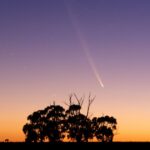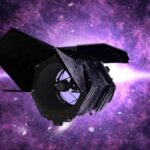This week will be a thrilling one for stargazers because they will see an Orionid meteor shower this week.
It is an annual event that runs from October 2 to November 7, but the Orionid meteor shower will peak between midnight and dawn on October 21 and 22. At this peak, the observer can expect a maximum of 20 meteors per hour when the atmosphere is clear and the sky is dark.
There are two meteor showers created by Halley’s comet: the Eta Aquarids meteor shower, runs in May, and the Orionid meteor shower runs in October. Debris left by Halley’s comet created these meteor showers. Halley’s comet takes 76 years to complete one orbit around the Sun; next time, it will be visible from Earth in the year 2061.
This debris enters the Earth’s atmosphere at speeds of around 66 Kilometers per second. Orionids are named after the Orion constellation because the meteors radiate from the same Orion constellation, a region north of Orion’s second brightest star, known as Betelgeuse.

How to See the Orionid Meteor Shower
The Orionid meteor shower is a spectacular event, and it’s happening right now! Here are some tips to help you catch a glimpse of these shooting stars:
- As mentioned above, the best time to watch the meteor shower is from October 20 to 21st. This is the time when the Orionid meteor shower will be at its peak.
- To enjoy the meteor shower show, choose a dark spot away from city lights where light pollution is least, the better you will be able to see the meteors.
- To see the meteors, look towards the constellation Orion. The meteors will appear to radiate from a point near Orion’s belt.
- Noteworthy is the viewing point: lie back and look up at the sky. You have to look about 45 to 90 degrees away from the radiant point; you don’t need to look directly at Orion.
- The main suggestion is you must have patience. Give your eyes 30 minutes to adjust to the darkness. After adjusting your eyes, you might see around 10 to 20 meteors per hour under ideal conditions.
- The moon is going to be very bright this time. Because of that, the faint meteors will outshine. However, the Orionids are known for their brightness and speed, so you might still catch some impressive meteors.
This year, the moon will be quite bright, so it might outshine some of the fainter meteors. However, the Orionids are known for their brightness and speed, so you might still catch some impressive fireballs.




